#Naqada I
Text
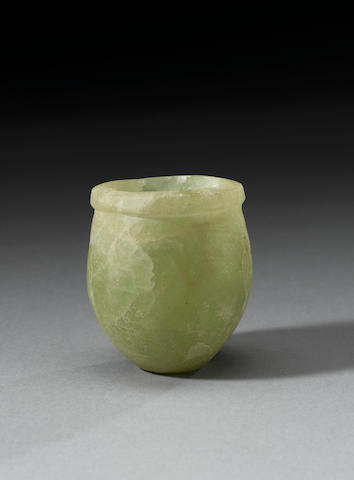
A rare small Egyptian Pre-Dynastic translucent pale green calcite vessel
Naqada I, circa 4000-3500 B.C.
#A rare small Egyptian Pre-Dynastic translucent pale green calcite vessel#Naqada I#circa 4000-3500 B.C.#ancient artifacts#archeology#archeolgst#history#history news#ancient history#ancient culture#ancient civilizations#ancient egypt#egyptian history#egyptian art#egyptian antiquities
107 notes
·
View notes
Text
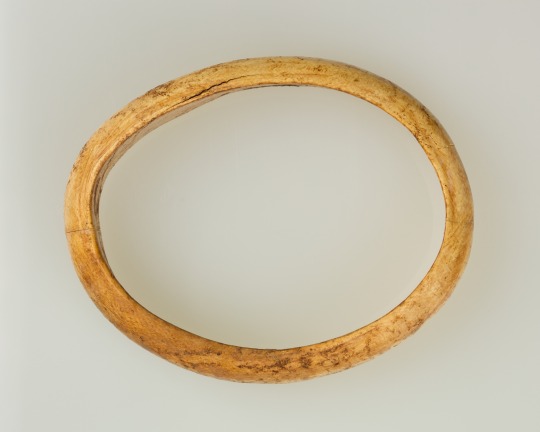
Ivory bracelet - Met Museum Collection
Inventory Number: 08.202.31
Predynastic, Naqada l–Naqada II, ca. 3850–3300 B.C.
Location Information: Location Unlisted
#ivory bracelet#bracelets#jewelry#predynastic#naqada ii#naqada i#met museum#08.202.31#location unlisted
0 notes
Text
I’ve just started the arts section of the Egyptology course I’m taking and if anyone can tell me where to buy a bowl or plate that looks like the Naqadan bowl with three hippopotami I will love you forever
#the naqada pottery is so beautiful#and the bowl with human feet??? I wanna buy ten#egypt#ancient egypt#naqada#hippo
1 note
·
View note
Text

I made this during my first semester of hand-building. My prof had shown us the original bowl below the semester prior and I could not stop thinking about it until I made one for myself
Spring 2022
182 notes
·
View notes
Text
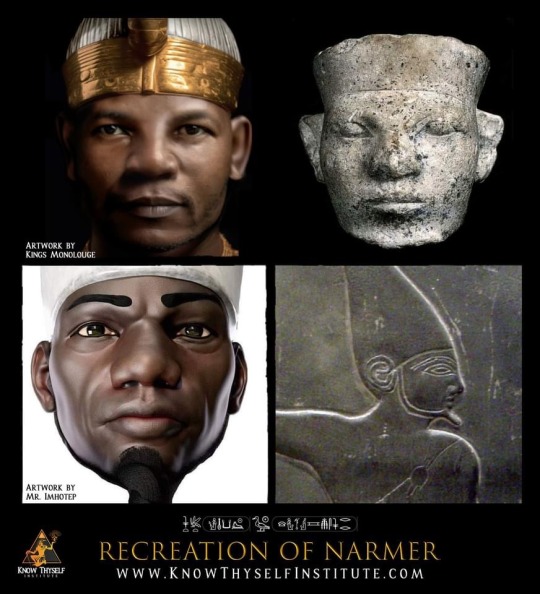
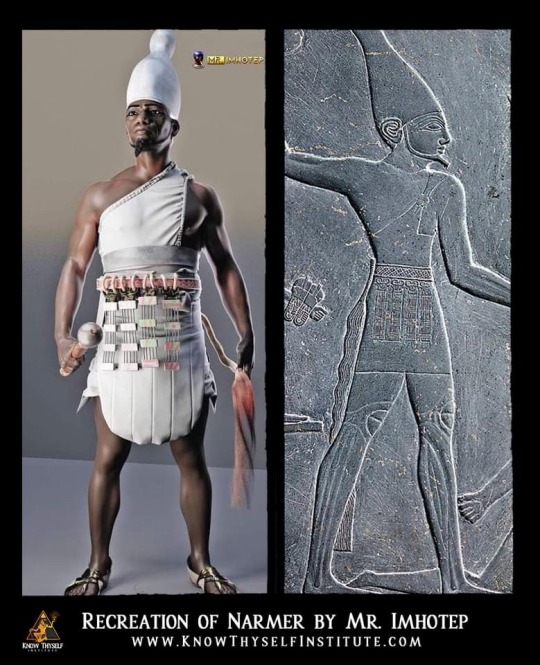


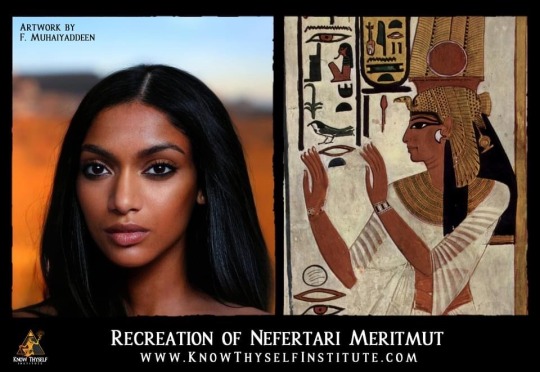

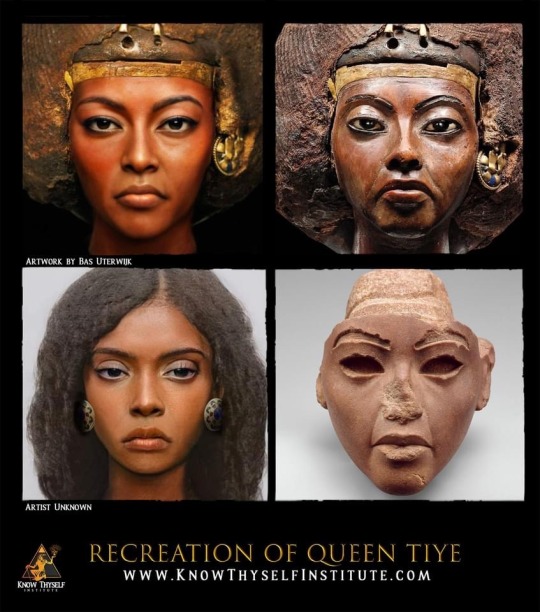


ORIGINS OF HAPI (NILE) VALLEY CIVILIZATION
The progenitors of the Nile Valley civilization were Nilo-Saharan peoples who migrated to the Hapi (Nile) Valley from the Green Sahara, Nubia and Northeast Africa. The cattle cults of Het-Heru (Hathor), spiritual beliefs, iconography and cultural motifs associated with the old Kingdom can be traced to these regions prior to the unification of the two lands. The science of mummification began in Libya with the 5600 year old Tashwinat Mummy, known as the “Black Mummy of the Green Sahara''. The Black Mummy predates the oldest Kemetic mummy by over 1000 years. Astronomy and the study of the procession of the equinox began in South Africa at the site of the Adams Calendar Stone Circle and continued at the Napta Playa Stone circle located in modern day Sudan. This 7000 year old ceremonial center dried out around 3400 BC and they transferred their knowledge into the Nile Valley. The earliest images of Pharaonic Kingship were found in Nubia at the site of Qustul were the oldest depiction of Pharaonic Kingship is shown on the Qustul incense Burner. The original populations of the Nile Valley were no different than modern Sudanese, Ethiopian, Eritrean and Somali populations of today with a mixture of western Eurasians via the Levant whom for the most part settled in the Delta region. The cultural overlap of Kush and Kemet existed from the very dawn of Hapi Valley civilization and the cultural fusion was expressed in the customs and spiritual beliefs of its early inhabitants. These ancient traditions are continually practiced in Africa to this day.
Below are the results from a genome project conducted by Dr. Shomarka Keita, a Research Affiliate and Biological Anthropologist in the Department of Anthropology at the Smithsonian Institution and Dr. A. J. Boyce, who works at the Institute of Biological Anthropology and St. John's College
Oxford University.
PROJECT MUSE
Genetics, Egypt, and History: Interpreting Geographical Patterns of Y Chromosome Variation
IV, XI, V=Nilotic African
VII, VIII=Near Eastern
235 S.O.Y. Keita and A. J. Boyce
Early speakers of Nilosaharan and Afroasiatic apparently interacted based on the evidence of loan words (Ehret, personal communication). Nilosaharan’s current range is roughly congruent with the so-called Saharo-Sudanese or Aqualithic culture associated with the less arid period (Wendorf and Schild 1980), and therefore cannot be seen as intrusive. Its speakers are found from the Nile to the Niger rivers in the Sahara and Sahel, and south into Kenya. The eastern Sahara was likely a micro-evolutionary processor and pump of populations, who may have developed various specific sociocultural (and linguistic) identities, but were genealogically “mixed” in terms of origins.
These identities may have further crystallized on the Nile, or fused with those of resident populations that were already differentiated. The genetic profile of the Nile Valley via the fusion of the Saharans and the indigenous peoples were likely established in the main, long before the Middle Kingdom. Post-neolithic/predynastic population growth, as based on extrapolations from settlement patterns (Butzer 1976) would have led to relative genetic stability. The population of Egypt at the end of the pre-dynastic is estimated to have been greater than 800,000, but was not evenly distributed along the valley corridor, being most concentrated in locales of important settlements (Butzer 1976). Nubia, as noted, was less densely populated.
Interactions between Nubia and Egypt (and the Sahara as well) occurred in the period between 4000 and 3000 BCE (the predynastic). There is evidence for sharing of some cultural traits between Sudan and Egypt in the neolithic (Kroeper 1996). Some items of “material” culture were also shared in the phase called Naqada I between the Nubian A-Group and upper Egypt (~3900-3650 BCE). There is good evidence for a zone of cultural overlap versus an absolute boundary (Wilkinson 1999 after Hoffman 1982, and citing evidence from Needler 1984 and Adams 1996). Hoffman (1982) noted cattle burials in Hierakonpolis, the most important of predynastic upper Egyptian cities in the later predynastic. This custom might reflect Nubian cultural impact, a common cultural background, or the presence of Nubians.
Whatever the case, there was some cultural and economic bases for all levels of social intercourse, as well as geographical proximity. There was some shared iconography in the kingdoms that emerged in Nubia and upper Egypt around 3300 BCE (Williams 1986). Although disputed, there is evidence that Nubia may have even militarily engaged upper Egypt before Dynasty I, and contributed leadership in the unification of Egypt (Williams 1986). The point of reviewing these data is to illustrate that the evidence suggests a basis for social interaction, and gene exchange.
236 S.O.Y. Keita and A. J. Boyce
There is a caveat for lower Egypt. If neolithic/predynastic northern Egyptian populations were characterized at one time by higher frequencies of VII and VIII (from Near Eastern migration), then immigration from Saharan sources could have brought more V and XI (Nilo-Saharan) in the later northern neolithic. It should further be noted that the ancient Egyptians interpreted their unifying king, Narmer (either the last of Dynasty 0, or the first of Dynasty I), as having been upper Egyptian and moving from south to north with victorious armies (Gardiner 1961, Wilkinson 1999). However, this may only be the heraldic “fixation” of an achieved politi- cal and cultural status quo (Hassan 1988), with little or no actual troup/population movements. Nevertheless, it is upper Egyptian (predy- nastic) culture that comes to dominate the country and emerges as the basis of dynastic civilization. Northern graves over the latter part of the predynastic do become like those in the south (see Bard 1994); some migration to the north may have occurred—of people as well as ideas.
238-239 S.O.Y. Keita and A. J. Boyce
After the early late pleistocene/holocene establishment of Afroasiatic-speaking populations in the Nile valley and Sahara, who can be inferred to have been predominantly, but not only V (and XI), and of Nilosaharan folk in Nubia, Sudan, and Sahara (mainly XI and IV?), mid- holocene climatic-driven migrations led to a major settlement of the valley in upper Egypt and Nubia, but less so in lower Egypt, by diverse Saharans having haplotypes IV, XI, and V in proportions that would significantly influence the Nile valley-dwelling populations.
These mid-Holocene Saharans are postulated to have been part of a process that led to a diverse but connected metapopulation. These peoples fused with the indigenous valley peoples, as did Near Easterners with VII and VIII, but perhaps also some V. With population growth the genetic profiles would become stabilized. Nubian and upper Egyptian proximity and on some level, shared culture, Nubia’s possible participation in Egyptian state-building, and later partial political absorption in Dynasty I, would have reinforced biological overlap (and been further “stabilized” by ongoing population growth).
Source:
https://muse.jhu.edu/article/187884
HEAD to HEAD: Ancient Egypt Reconstructions COMPARED (Bas Uterwijk vs TKM): https://www.youtube.com/watch?v=E8iN6EFVTbQ&t=35s
Visit A Virtual Museum:
https://www.knowthyselfinstitute.com/museum
"I have not spoken angrily or arrogantly. I have not cursed anyone in thought, word or deeds." ~35th & 36th Principals of Ma'at
140 notes
·
View notes
Text

Bowl with crocodiles
Predynastic Period, Naqada I, ca. 4000-3500 BC.
Brown clay. Dimensions: height: 11 cm, diameter: 19.5 cm
Now in the Egyptian Museum, Cairo. JE 38284, CG 18804
This flared bowl with crocodiles and a flattened rim is typical of the pottery production of the early Predynastic Period. Generally characterized by the red coloring of the surfaces, decoration consists of geometric motifs or stylized plants or animals rendered by means of rapid brushstrokes in white paint.
On the outside of this particular vessel, however, there is an unusual applied decorative element, rare for this period. Clay models of four crocodiles have been attached diagonally to the exterior surface of the bowl, with their noses almost touching the rim.
Read more
24 notes
·
View notes
Text

Figurine of a woman, Pre-Dynastic Period (Badari-Naqada I), c. 4500-3600 B.C.
Musée du Louvre. E 11887
48 notes
·
View notes
Note
First sentence prompts for a tedious afternoon:
She was so bored she could scream, if screaming was something she ever allowed herself to do.
"I won't say no to another cup of tea" had seemed an entirely reasonable remark.
She'd gotten herself into this mess, surely she could get herself out.
Barley-water never tasted as good as it sounded and that wasn't saying very much.
The body lay most elegantly sprawled on the parquet floor and he couldn't help envying the poor sod.
I am tantalized! (The last one sounds as though Bertie Wooster has stumbled into a mystery novel by mistake. Or perhaps Nigel Bathgate has found himself in the middle of a murder again.)
She was so bored she could scream, if screaming was something she ever allowed herself to do. What Evie found particularly irksome was that she knew the Naqada excavations to be considerably more interesting than the lecture that was currently being inflicted on her and her fellow-students.
"And so," continued Cornelius Rookwood, "we see here a number of pots with wavy handles, unlike those in the lot discovered by..." Evie stifled a yawn.
"Miss Carnahan?"
"Yes, sir," said Evie promptly, sitting up straight; "I was wondering about the graves Grenfell had excavated."
#reader she was only sort of wondering about the graves grenfell had excavated#but she is a quick thinker#five sentence fic#the mummy 1999
22 notes
·
View notes
Text
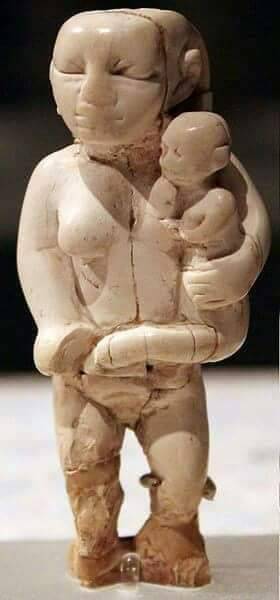
When the Great Pyramid was built in the Old Kingdom, how old was this statue?
3 thousand years ago and now 7,300 years old, dating back to the Badari civilization of Assiut, the pre-dynastic era 🙏
An ivory statue of a woman carrying her child. These models were also common in the Naqada I and II civilizations 💖
It is preserved in the Berlin Museum 🇩🇪
10 notes
·
View notes
Photo

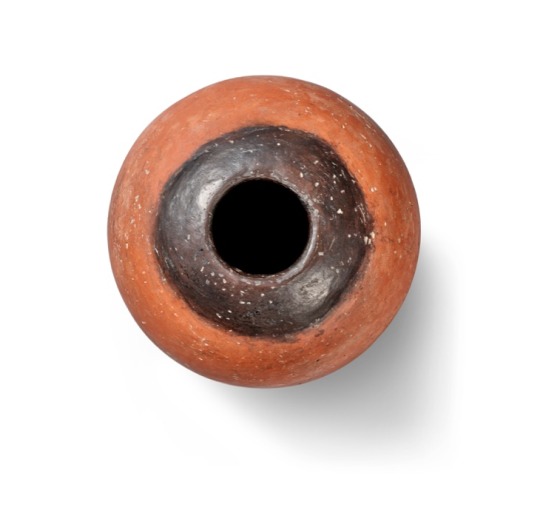
AN EGYPTIAN BLACK-TOPPED REDWARE JAR
PREDYNASTIC, LATE NAQADA I-II, CIRCA 3700-3200 B.C.
31/4 in. (8.2 cm.) high.
#AN EGYPTIAN BLACK-TOPPED REDWARE JAR#PREDYNASTIC LATE NAQADA I-II CIRCA 3700-3200 B.C.#pottery#ancient pottery#ancient artifacts#archeology#archeolgst#history#history news#ancient history#ancient culture#ancient civilizations#ancient egypt#egyptian history#egyptian art
8 notes
·
View notes
Photo
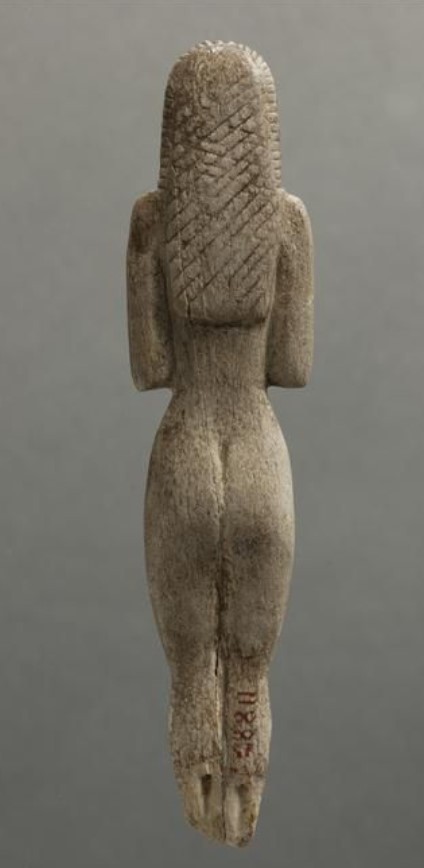

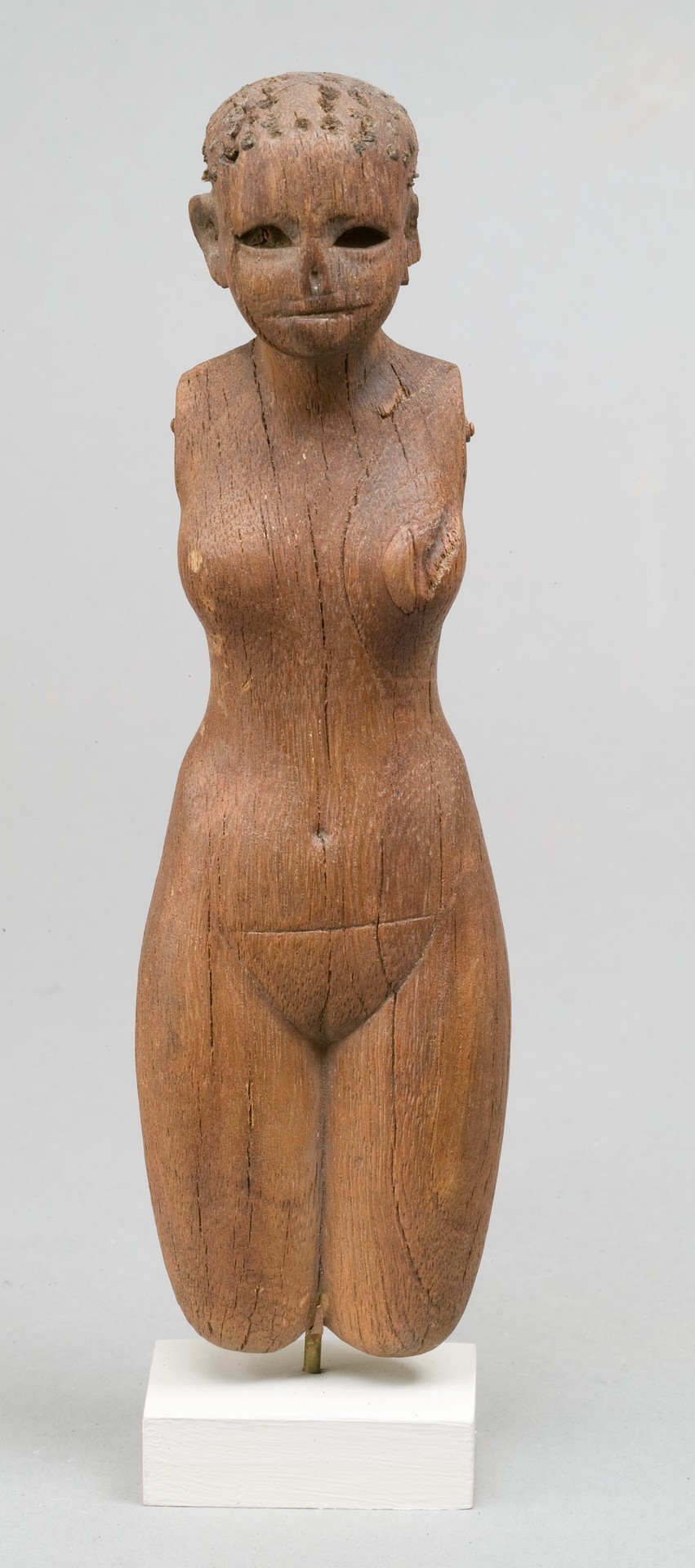
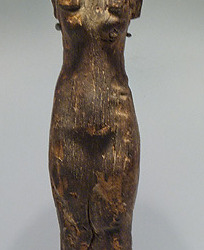
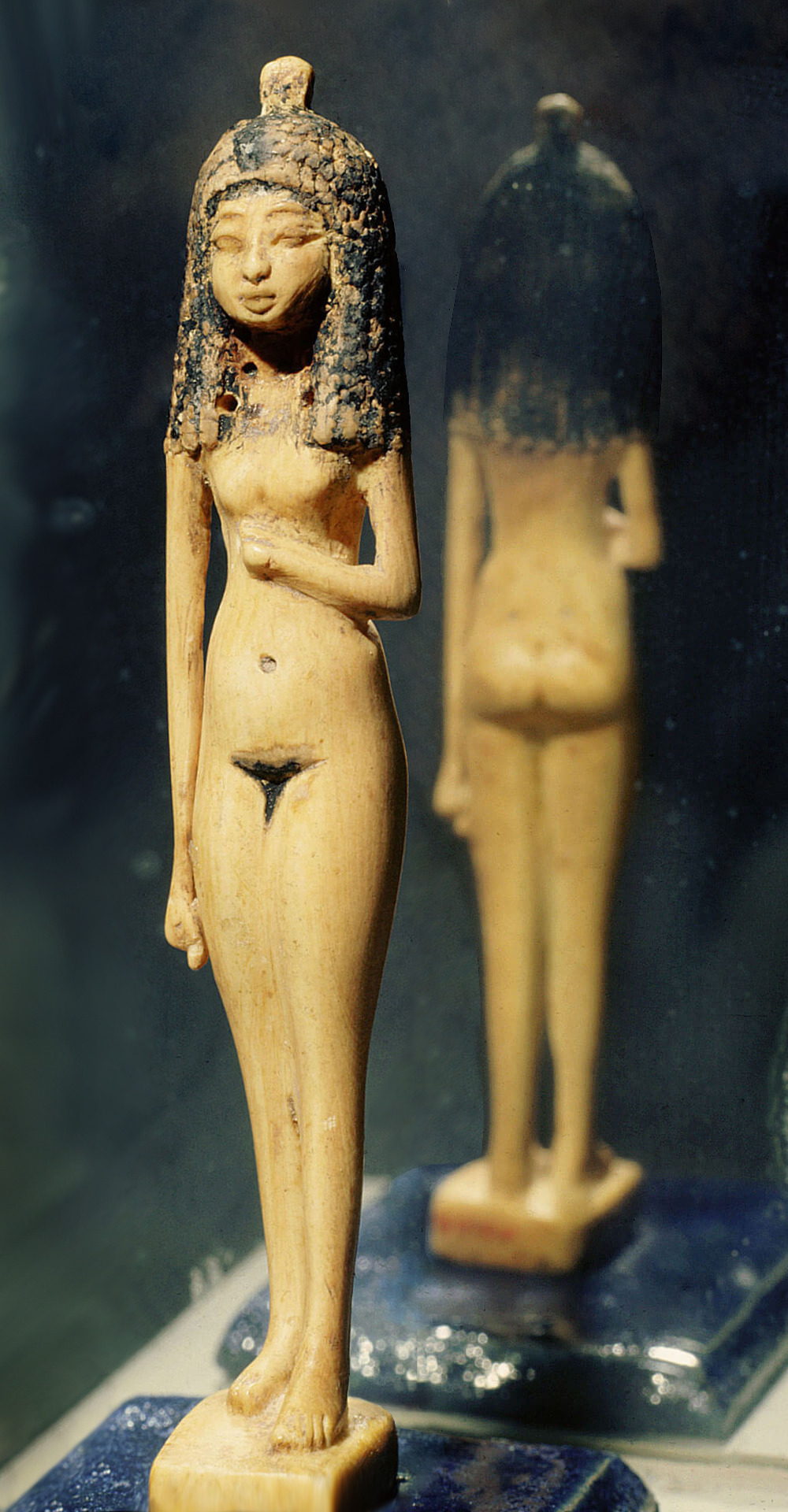

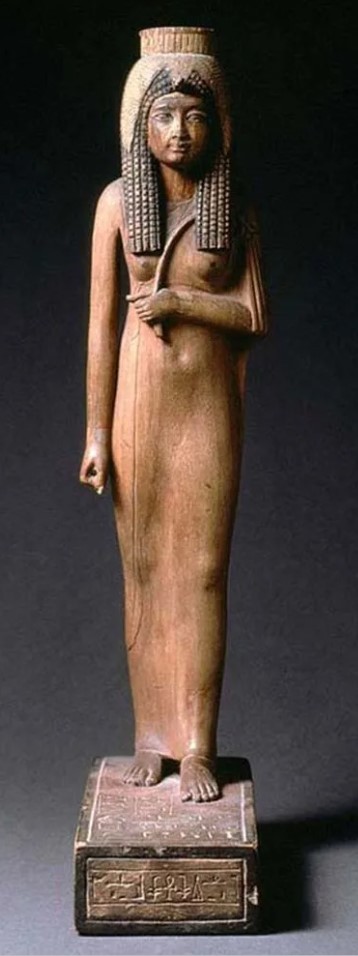
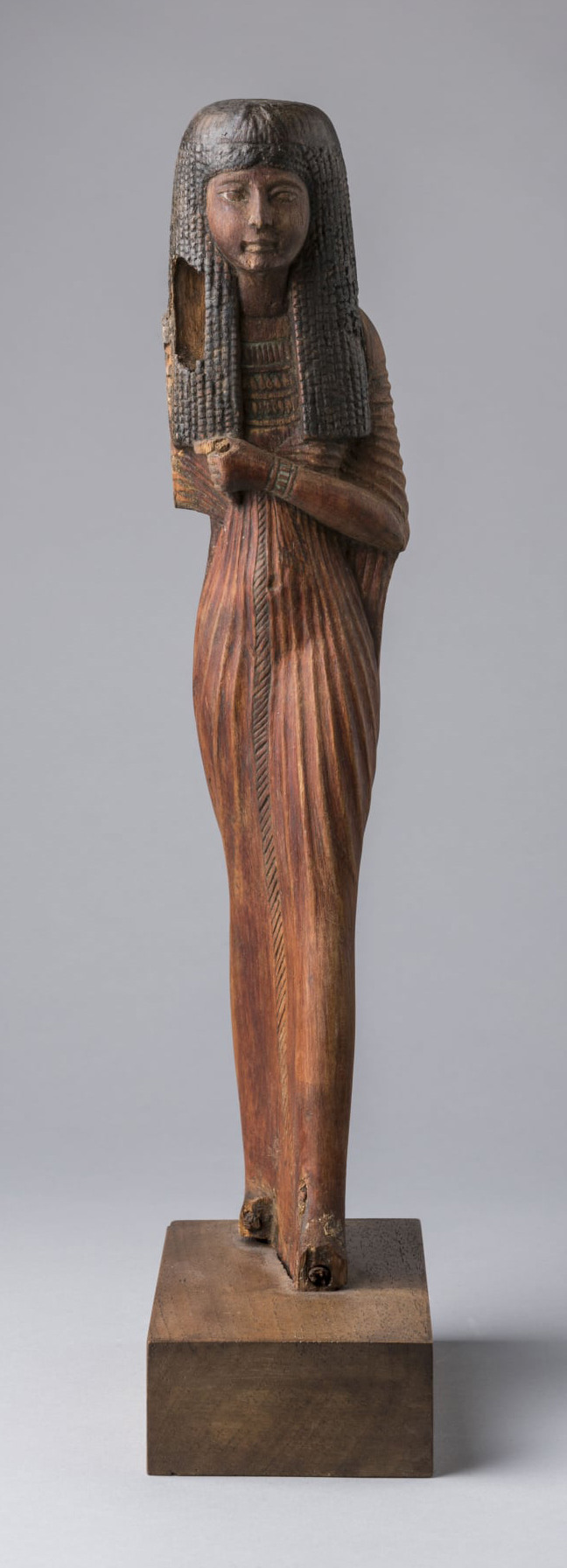
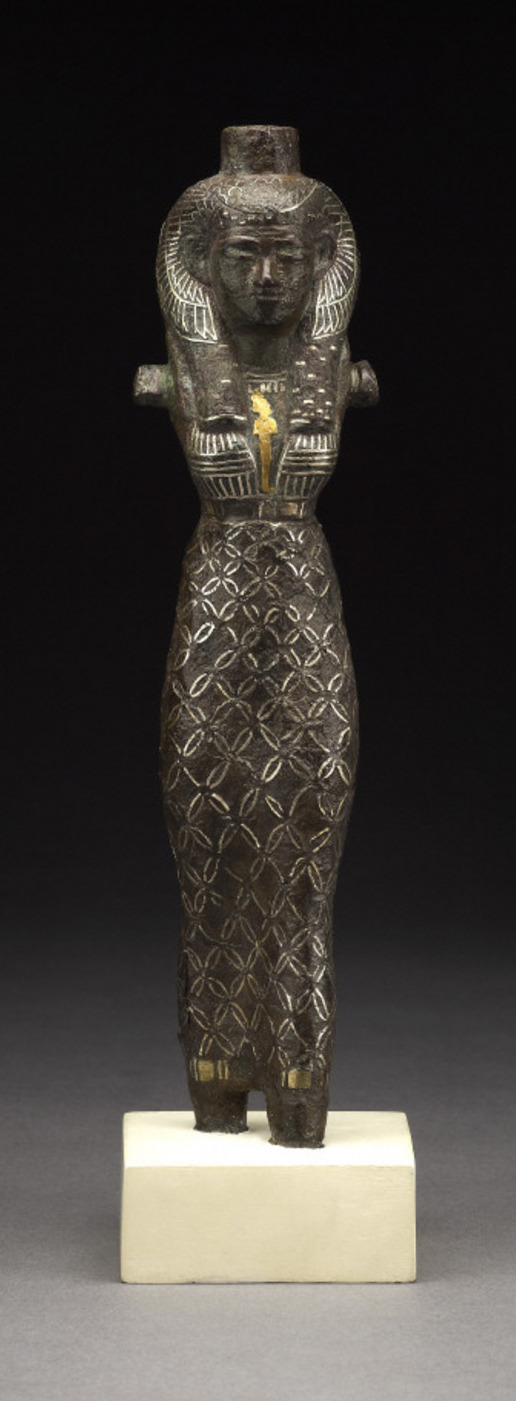
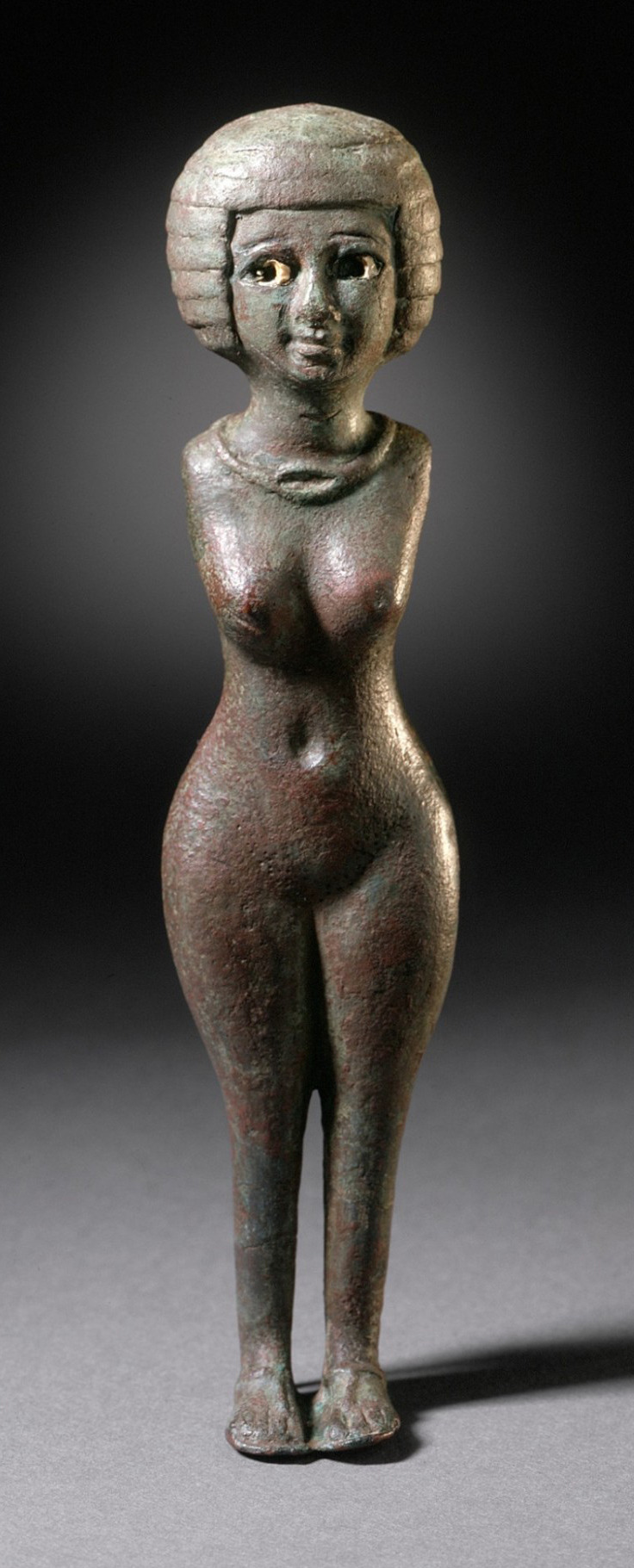

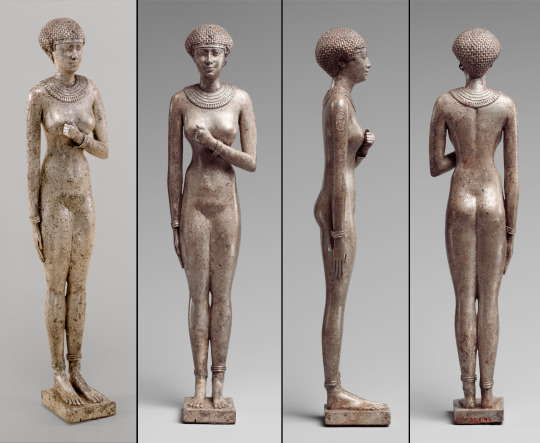
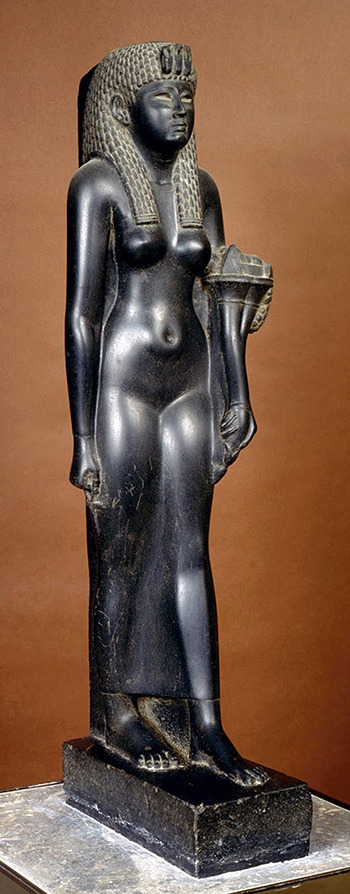
the female figure as portrayed in over 4,000 years in ancient Egypt — from Neolithic times up until Cleopatra
Female Nude - ivory - Neolithic - Predynastic Period, Naqada I, c.4400-3500 BCE
Priestess Imertnebes - wood, faience, bronze - Middle Kingdom, c.1991-1783 BCE
torso of a woman - wood - Middle Kingdom, Dynasty 12 c.1850–1640 BCE
female figure - painted wood with gold-leaf inlaid eyes - New Kingdom, 1551-1070 BCE
figure of a young concubine of King Amenhotep III - c.1386-1349 BCE
figure of a woman - ivory - New Kingdom, 18th or 19th Dynasty - c.1550-1070 BCE
Queen Ahmose-Nefertari - wife of Ahmose 1, mother of Amenhotep 1 - 19th Dynasty
striding woman - polychrome wood - Thebes - New Kingdom, 19th Dynasty, c.1292-1189 BCE
figure of a queen or divine consort - copper alloy inlaid with gold detail - Third Intermediate Period, c.1069-664 BCE
Nubian female figure - bronze with inlaid eyes - Late Period, 25th Dynasty c.711-600 BCE
cosmetic container in the shape of a young swimmer - 26th Dynasty
figure of a woman (four views) - silver - Late Period (Saite), reign of Necho II, Dynasty 26 - c.610-595 BCE
Cleopatra VII Philopator - black basalt - 146 cm high - Ptolemaic Period, 1st century BCE
43 notes
·
View notes
Text
Him: I'm coming over tonight your ass better not be Bowl with Human Feet Predynastic Late Naqada I - Naqada II
My stupid ass:
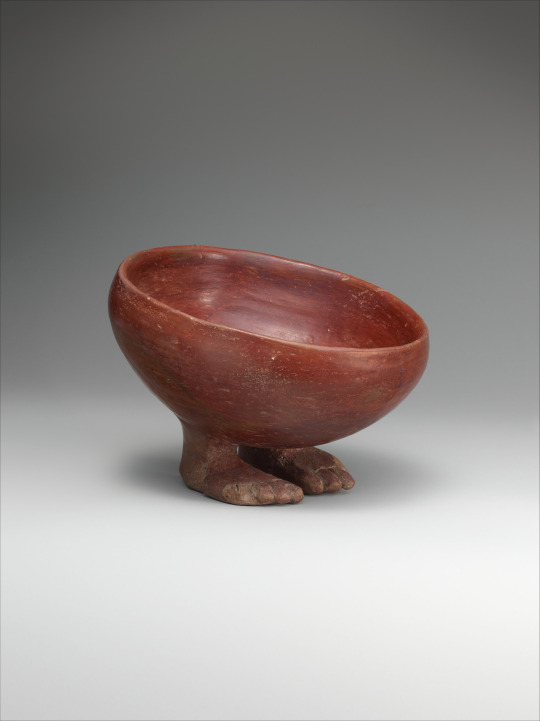
28 notes
·
View notes
Text
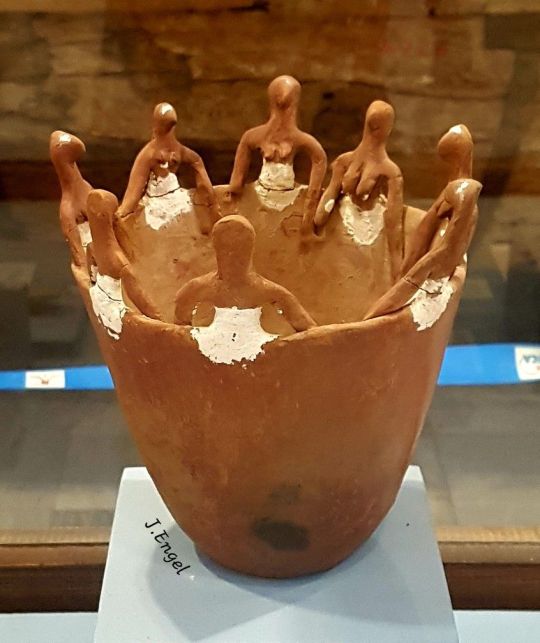
Vaso de cerâmica egípcia pré-dinástica em grés vermelho polido da Tumba U502, Cemitério U, Abydos, Egito. Descoberto pelo Detsches Archaologisches Institut, Cairo. Datado do período Naqada I, a borda é cercada por oito figuras femininas dançantes usando saias brancas.
Se você deseja explicação, orientação, recomendações bibliográficas personalizadas ou aulas específicas, entre em contato pelo e-mail [email protected] e solicite um orçamento.
Terei prazer em atender, esse é o meu trabalho.
Não atendo através de minhas redes sociais. Valorize o trabalho de professores.
Hora/aula - R$ 100,00
Pacote de 4 horas/aula - R$ 300,00
FORMAS DE PAGAMENTO:
1. Pix: [email protected]
2. PicPay: @angelanatel
3. Mercado Pago: link.mercadopago.com.br/angelanatel (nesse caso acrescentando 5 reais ao valor total)
4. PayPal - [email protected] (nesse caso acrescentando 7 reais ao valor total)
5. PagSeguro:
1 hora/aula - https://pag.ae/7YYLCQ99u
Pacote de 4 horas/aula - https://pag.ae/7YYLEGWG8
Sobre mim e meu trabalho: https://linktr.ee/angelanatel
0 notes
Text

Bowl with Human Feet
Egyptian, Predynastic Period, Late Naqada I - Naqada II. Pottery (red polished ware), ca. 3700-3450 BCE
0 notes
Text
La culture Badriya à l'époque pré-dynastique de l'Égypte
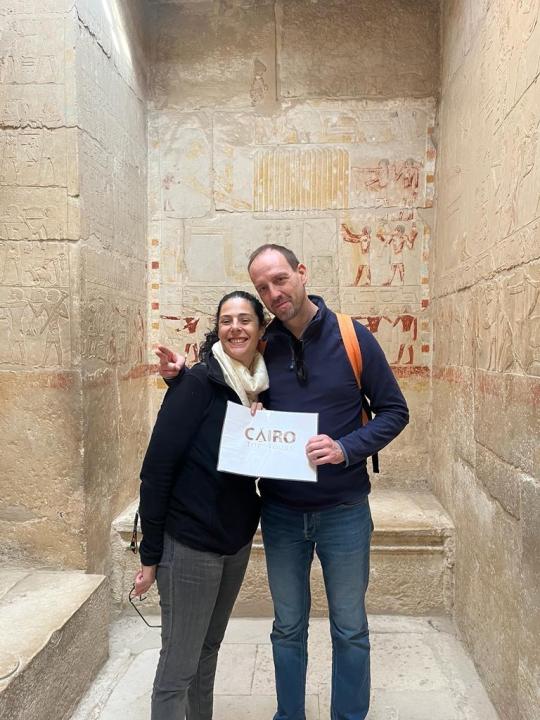
La période pré-dynastique s'étend sur une très longue période, qui représente la première preuve du début de l'émergence de la civilisation humaine en Égypte ; c'est la période qui précède l'invention de l'écriture et de l'enregistrement, et c'est la période au cours de laquelle le premier homme a été témoin de l'enregistrement de ses pensées et de ses réalisations et de l'expression de lui-même à l'aide de la langue écrite. Sur papyrus.
Si vous souhaitez découvrir la riche histoire de l'Égypte, les circuits d'une journée en Égypte et les circuits d'une journée au Caire offrent d'excellentes occasions de se plonger dans le passé fascinant du pays. Ces circuits offrent des expériences immersives où vous pourrez découvrir des sites historiques emblématiques, des rencontres culturelles et les divers paysages qui font de l'Égypte une destination captivante à explorer.
Le processus d'enregistrement des événements à l'aide de hiéroglyphes égyptiens a commencé à apparaître en Égypte à la fin de l'an 4000 avant J.-C. et au début de l'an 3000 avant J.-C.. L'écriture est considérée comme la ligne de démarcation entre la préhistoire et l'histoire.
Les antiquités découvertes ont contribué à clarifier la vision de l'homme préhistorique en apportant des informations sur, entre autres, son origine, sa culture, ses croyances religieuses, ses habitations, ses salaires et ses tombes.
Les lignes de démarcation entre la préhistoire enregistrée et la division des périodes historiques varient d'un pays à l'autre.
Dans la vallée du Nil, par exemple, l'écriture est apparue au début des années 3000 avant J.-C., tandis qu'en Mésopotamie, elle est apparue en 2800 avant J.-C.
La période préhistorique est divisée en trois grandes étapes : le paléolithique (600 000-10 000 av. J.-C.), le mésolithique (10 000-5 000 av. J.-C.) et le néolithique (5 000-3 100 av. J.-C.).
Le Néolithique égyptien est le témoin des efforts de l'homme pour créer la vie, que ce soit en termes économiques, sociaux ou religieux, en faisant confiance au milieu environnant et en s'appuyant sur les traditions, la pleine nature de ses idées et le sens de la créativité et de la création.
La première affirmation est que les outils étaient en pierre et non en métal. Cette étape est appelée le Néolithique. La deuxième phase a commencé avec l'utilisation par l'homme de métaux, en particulier le cuivre, c'est pourquoi on l'appelle l'âge du cuivre.
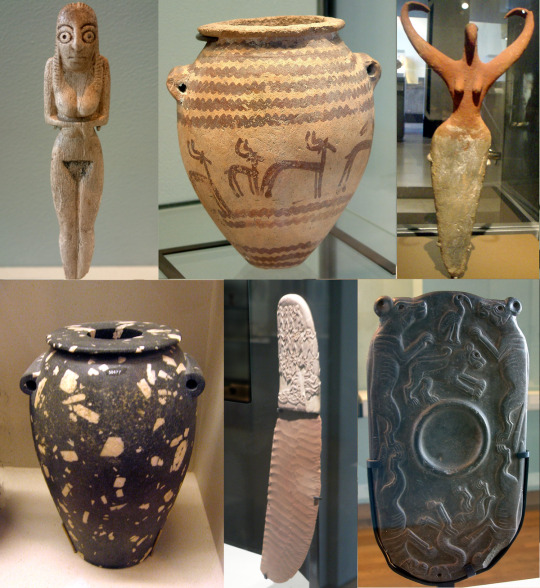
Les principaux centres de la première phase du Néolithique découverts jusqu'à présent en Égypte sont les suivants : Marmada Beni Salama (Delta Ouest), Al-Omari (Ras du Delta), Helwan Nord, El Fayoum et Wadi El Rayan du Caire. Ces lieux représentent la culture du nord, et la culture du sud est représentée par Deir Tasa (Deir Tasa) dans la ville de Badari à Assiut.
La culture badarienne en Égypte : La culture badarienne appartient à l'âge du bronze, caractérisé par la découverte du cuivre et d'autres métaux. Les Badariens se sont attachés à développer l'industrie de la poterie, en cherchant à la rendre plus lisse et plus décorative. Ils produisaient des poteries rouges à bords noirs et décoraient leurs récipients de dessins de plantes et de formes. Les Pharaons ont été élevés pour chasser et penser par eux-mêmes, c'est pourquoi ils ont inventé des moyens de fabriquer des bâtons à crochets pour attraper les oiseaux de mer.
Cette société avait également la particularité de produire de minuscules statues de femmes en argile, en ivoire ou en terre cuite. Ils utilisaient la turquoise et le cuivre agate pour fabriquer de petites perles qu'ils attachaient avec des fils de lin pour confectionner des colliers pour les femmes. Les femmes s'intéressaient à la décoration, à la parure et aux cosmétiques et utilisaient le bleu et le rouge pour se maquiller. Elles portaient des vêtements en lin et en cuir.
La culture de Naqada I en Égypte : Naqada I est une ville située dans le gouvernorat de Qena, où un grand nombre de céramiques ont été trouvées dans plus de 900 tombes, et plus de 1 500 tombes ont été découvertes à ce jour.
La première période d'expansion de cette culture se divise en trois étapes. Au début, il y avait la civilisation d'Amra, au sud de Girga, qui représente le début de l'ère préhistorique de Magadah. Le premier modèle est caractérisé par des poteries rouges lisses, des poteries rouges combinant l'obscurité et un troisième type de poterie à dalle blanche, le Kankhar. À ce stade, il existe des alternatives.
La culture Naqada II : La culture de Naqada II s'étend à la région de Basse Nubie au sud et à Gerza, Abu Sir et Maadi au nord. Jusqu'à présent, aucune découverte de ruines anciennes de Naqada II n'a été faite dans le delta. En ce qui concerne la poterie de la culture Naqada II, il existe un type distinct appelé petri, un nom qui fait référence à la poterie décorée ou à la poterie avec des dessins rouges.
La culture de Maadi : La fin du Néolithique a vu l'émergence de la civilisation de Maadi, qui coïncide avec l'âge des métaux dans le Delta. Cette culture est apparue au milieu du Delta et de la Haute-Égypte et a formé un lien entre eux. La civilisation de Maadi se caractérise par des récipients en pierre fabriqués à partir de différents types de roches.
Si vous souhaitez explorer la riche histoire de l'Égypte et faire l'expérience de son patrimoine culturel, les forfaits de voyage en Égypte et les circuits en Égypte offrent d'excellentes possibilités d'expériences immersives. Ces circuits permettent de découvrir des sites historiques célèbres et circuits de luxe en Égypte et Croisière sur le Nil en Égypte révèlent les divers paysages qui font de l'Égypte une destination captivante à visiter. Que vous souhaitiez explorer les merveilles des pyramides antiques, vous promener le long du Nil ou vous plonger dans les souks animés du Caire, ces circuits peuvent répondre à vos intérêts et vous permettre de mieux comprendre le passé fascinant de l'Égypte.
0 notes
Text
The Narmer Palette

The Narmer Palette is the name of an elaborately carved shield-shaped slab of gray schist made during the Old Kingdom of Dynastic Egypt (ca. 2574-2134 BC). It is the earliest monumental representation of any pharaoh: the carvings on the palette depict events in the life of King Narmer, also known as Menes, considered the founding ruler of Dynastic Egypt.
Narmer's palette was found in a deposit with 2,000 other votive objects within the ruins of a temple at his capital city of Hierakonpolis south of Luxor. British archaeologists James E. Quibell and Frederick Green found the main deposit during their 1897-1898 field season at Hierakonpolis.
Palette and Palettes
The Narmer Palette is 64 centimeters (25 inches) long, and its shield shape is the same as that used for the domestic tool called a palette, which was used to hold cosmetics. Plainer, smaller domestic cosmetic palettes had been made by Egyptians for at least a thousand years before the date of the Narmer Palette. That's not unusual in Egyptian iconography—the Narmer Palette is one of a series of elaborately carved, portable objects dated to the formative period of Dynastic culture in Egypt, around the turn of the third millennium BCE. Many of these objects are ceremonial replicas of long-used domesticate objects.
Other examples of large carved objects depicting the deeds of Old Kingdom pharaohs include the Narmer Macehead, which illustrates the presentation of animals and people to a seated ruler, likely Narmer; a flint knife with an ivory handle showing a scene of combat found at Gebel el-Arak; and a slightly later ivory comb bearing the name of a different king of the First Dynasty. All of these are oversized, elaborate versions of common artifact types found in the Badarian/Khartoum Neolithic-Naqada I periods, and in this manner, they represent references to what would have been ancient history to the people of the Old Kingdom.
Who Was Narmer?
Narmer, or Menes, ruled about 3050 BCE and was considered by the First Dynasty Egyptians as the founder of that Dynasty, the last king of what archaeologists call Dynasty 0, or the Early Bronze Age IB. Egyptian dynastic civilization began over 5,000 years ago with the unification of Upper and Lower Egypt into a single Upper Egyptian Polity based at Hierankopolis, that unification attributed to Narmer in historical Egyptian records. Numerous later Egyptian writings claim Narmer as the conqueror of all the societies along the length of the Nile River, but some scholarly doubt persists. Narmer's own tomb has been identified at Naqada.
Cosmetic palettes began to be used as prestige objects in Egypt as early as the predynastic Naqada II-III period (3400-3000 BCE). A depression on such palettes was used to grind pigments, which were then mixed into a colored paste and applied to the body. The Narmer Palette was probably never used for that purpose, but there is a circular depression on it. That depression is what makes this side the "obverse" or front of the palette; despite that fact, the most often reproduced image is that of the back.
Iconography of the Narmer Palette
Carved into the top scrolls on both sides of Narmer's palette are cows with human faces, sometimes interpreted as the goddesses Bat and Hathor. Between the two is a serekh, a rectangular box containing hieroglyphs of the main protagonist, Narmer.
The main central relief of the reverse side of the palette shows King Menes wearing the white crown and dress of Upper Egypt kings and raising his mace to smite a kneeling prisoner. A falcon representing the Egyptian sky god Horus perches on a rebus listing countries defeated by Menes and a human arm coming from the falcon holds a rope securing a prisoner's head.
The Obverse Side
On the front or obverse side, the king, wearing the red crown and costume of Lower Egypt, marches out to view the stacked and dismembered bodies of his slain enemies, preceded by the souls of the kings of Lower Egypt. To the right of his head is a catfish, the schematic representation of his name Narmer (N'mr). Below that and twining around the depression are the long necks of two mythical creatures, serpent-leopards borrowed from Mesopotamian imagery. Some scholars such as Millet and O'Connor have argued that this scene functions as a year label—the palette represents events that happened during the Year of Smiting the North Land.
At the bottom of obverse side, the figure of a bull (probably representing the king) threatens an enemy. In Egyptian iconography, Narmer and other pharaohs often are illustrated as animals. Narmer is illustrated elsewhere as a bird of prey, a scorpion, a cobra, a lion or a catfish: His Horus name "Narmer" could be translated as "mean catfish," and his name glyph is a stylized catfish.
The Purpose of the Narmer Palette
There are several interpretations of the purpose of the palette. Many perceive it as a historical document—a bit of political braggadocio—specifically of the unification of Upper and Lower Egypt. Others feel it is a reflection of early Dynastic attitudes towards the cosmos.
Some, such as Wengrow, believe the palette illustrates a Mediterranean cattle cult dating back to the Neolithic. Given its recovery from within a temple deposit, the palette may be a dedicatory object for the temple in which it was found, and it was probably used in rituals that took place in the temple and celebrated the king.
Whatever else the Narmer palette might be, the iconography is an early and definitive manifestation of a common image among rulers: the king smiting his enemies. That motif remained an important symbol throughout the Old, Middle and New Kingdoms and into Roman times, and arguably is a worldwide symbol of rulers.
Source: ThoughtCo.
#Ancient Egypt#Egyptian artefacts#Egyptology#Narmer#Narmer Palette#historical documents#Early Dynastic Period#Lower Egypt#Egyptian rulers#First Dynasty
1 note
·
View note